Problem Solving: Grades 5-8
These problems are designed for students in Grades 5-8:

Gr. 5-8: Number Sense & Numerical Operations
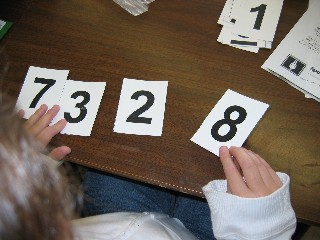
 Bake Sale requires students to work backward to solve the problem.
Bake Sale requires students to work backward to solve the problem.
 Factor Investigation challenges students to list all factors of the numbers 1-25 and identify the numbers as abundant, deficient, perfect, prime. Students can refer to this list when playing Factor Blaster or Factor Game.
Factor Investigation challenges students to list all factors of the numbers 1-25 and identify the numbers as abundant, deficient, perfect, prime. Students can refer to this list when playing Factor Blaster or Factor Game.
 Investigating Exponents challenges students to identify the different patterns found in the units digits of numbers raised to different powers.
Investigating Exponents challenges students to identify the different patterns found in the units digits of numbers raised to different powers.
 Monkey Business also requires students to work backward to figure out how many coconuts there were before each monkey ate one and took a third of what was left.
Monkey Business also requires students to work backward to figure out how many coconuts there were before each monkey ate one and took a third of what was left.
 Mrs. Meatball challenges students to solve pizza fraction problems pictorially.
Mrs. Meatball challenges students to solve pizza fraction problems pictorially.
 Reading Challenge requires students to figure out what page a student read last, given only the product of the last two pages.
Reading Challenge requires students to figure out what page a student read last, given only the product of the last two pages.
-
 Stand Up and Be Counted requires students to analyze the pattern in the class game and then analyze how a change to the game impacts the results.
Stand Up and Be Counted requires students to analyze the pattern in the class game and then analyze how a change to the game impacts the results.
 Thirteen Ways Recording Sheet was designed for students to record the thirteen ways to shade the diagram to represent 1/2 as found on the PBS Cyberchase website listed on the Recording sheet.
Thirteen Ways Recording Sheet was designed for students to record the thirteen ways to shade the diagram to represent 1/2 as found on the PBS Cyberchase website listed on the Recording sheet.
Gr. 5-8: Geometry & Measurement
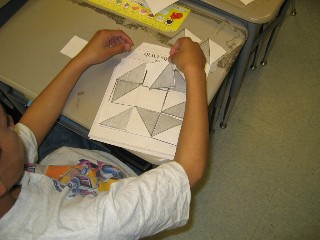
 Thirteen Ways Recording Sheet was designed for students to record the thirteen ways to shade the diagram to represent 1/2 as found on the PBS Cyberchase website listed on the Recording sheet.
Thirteen Ways Recording Sheet was designed for students to record the thirteen ways to shade the diagram to represent 1/2 as found on the PBS Cyberchase website listed on the Recording sheet.
Gr. 5-8: Patterns & Algebra
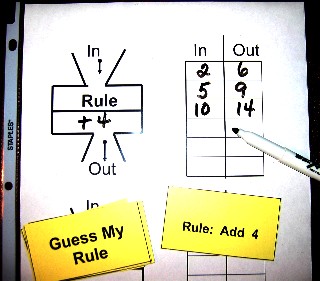
-
 Bulldog Travel Agency asks students to evaluate car rental plans from three different companies and recommend the best match, given different family travel plans.
Bulldog Travel Agency asks students to evaluate car rental plans from three different companies and recommend the best match, given different family travel plans.
-
 Jen and Berry's Ice Creamery requires students to write a profit rule for the store, then use that rule (function) to evaluate the profit, given the number of customers each day.
Jen and Berry's Ice Creamery requires students to write a profit rule for the store, then use that rule (function) to evaluate the profit, given the number of customers each day.
 The Million Dollar Mission asks students to decide which salary is the better offer for one month's work: one million dollars or one cent on the first day, two cents on the second day, four cents on the third day, etc.
The Million Dollar Mission asks students to decide which salary is the better offer for one month's work: one million dollars or one cent on the first day, two cents on the second day, four cents on the third day, etc.
Gr. 5-8: Data Analysis & Probability
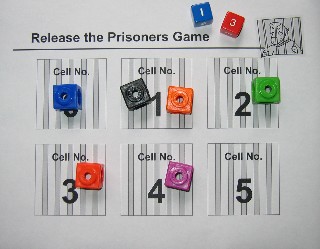
-
 TV Survey is an example of a data analysis problem with questions designed to address each level of Bloom's Taxonomy.
TV Survey is an example of a data analysis problem with questions designed to address each level of Bloom's Taxonomy.
- The
 Cereal Toy Investigation simulates students getting one of six prizes in a box of cereal and asks students to estimate how many boxes of cereal they will need to buy before getting all 6 of the different toys. Students make a prediction, conduct the simulation, organize data and analyze the data to write a letter to Mrs. Oats, detailing the expected results of this sales promotion. Instructions and all handouts are included for this activity.
Cereal Toy Investigation simulates students getting one of six prizes in a box of cereal and asks students to estimate how many boxes of cereal they will need to buy before getting all 6 of the different toys. Students make a prediction, conduct the simulation, organize data and analyze the data to write a letter to Mrs. Oats, detailing the expected results of this sales promotion. Instructions and all handouts are included for this activity.
- An
 Online Cereal Toy Investigation Simulator was developed so that students can run lots of virtual trials to collect data on a larger sample after conducting the dice-toss experiment. Be sure to read the instructions before loading this Java applet.
Online Cereal Toy Investigation Simulator was developed so that students can run lots of virtual trials to collect data on a larger sample after conducting the dice-toss experiment. Be sure to read the instructions before loading this Java applet.
- An
- See
 Data Analysis: Two-Dice Toss for additional games and experiments. Any of these games become a problem-solving exercise when students are asked to write about and defend a winning strategy they developed after playing the game and analyzing the underlying probability.
Data Analysis: Two-Dice Toss for additional games and experiments. Any of these games become a problem-solving exercise when students are asked to write about and defend a winning strategy they developed after playing the game and analyzing the underlying probability.
Gr. 5-8: Discrete Math
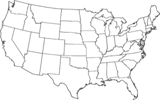
-
 How Many Different Ways Can You Make the Word SNOW? is easily solved with reference to Pascal's Triangle, but then try to show each of the different paths. This requires organized counting. Use the recording worksheet to assess student use of systematic counting techniques to find all of the ways and relate them to the appropriate row of Pascal's triangle.
How Many Different Ways Can You Make the Word SNOW? is easily solved with reference to Pascal's Triangle, but then try to show each of the different paths. This requires organized counting. Use the recording worksheet to assess student use of systematic counting techniques to find all of the ways and relate them to the appropriate row of Pascal's triangle.
-
 Winter Paths requires students to use systematic counting techniques to find all of the paths that spell WINTER and relate the solution to the appropriate row of Pascal's triangle.
Winter Paths requires students to use systematic counting techniques to find all of the paths that spell WINTER and relate the solution to the appropriate row of Pascal's triangle.
